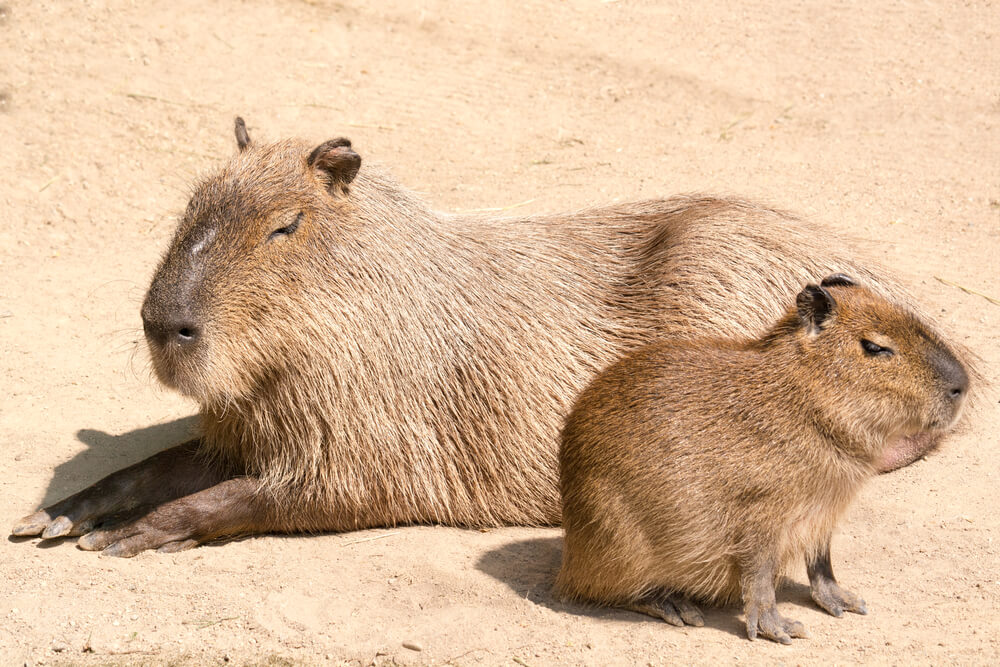The South American capybara is a large rodent that lives in the grasslands and savannas of Central and South America.
It can be found in Bolivia, Brazil, Colombia, Ecuador, Guyana, French Guiana, Peru, Suriname, Trinidad and Tobago, and Venezuela.
The capybara is an important part of the ecosystem by helping to maintain balance due to its grazing habits.
The capybara has an average length of about 1.5 feet (45cm) with a tail of about 2 feet (60cm). They are pretty stocky which leads to their nickname “water rat” in some areas.
Their short legs also contribute to their squat appearance when on all fours as well as when standing upright.
Capybaras live an average lifespan of 10-14 years in captivity but they tend to live much longer than this in the wild because they are not hunted for their fur or flesh like other mammals are in their natural habitat.
Captive animals have even been known to live up to 25 years old! Read on to learn more about the capybara’s life expectancy…
How long does a capybara live as a pet?
In general, capybaras live an average of 7-10 years in captivity.
This is much longer than their life expectancy in the wild, which is about 3-5 years.
Capybaras have been known to live up to 25 years old! They can also be very social with humans and other domesticated animals.
The most important indicator of how long a capybara will live in captivity is its health.
If they are healthy and have a good diet, they tend to live longer than animals that are neglected or mistreated.
If you’re interested in getting a capybara as a pet, ensure they are taken care of properly and provide them with nutritious food, clean water, and exercise when needed.
How old is the oldest capybara?
The oldest reported capybara in captivity was a female who lived to be 26 years old. This is an impressive age because the average lifespan of a capybara in the wild is 10-14 years.
Although they live longer than their wild counterparts, they still have shorter lifespans than other species of rodents like rats and mice.
Another interesting fact about the capybara’s lifespan is that during hibernation, the average lifespan for a capybara can be as long as 40 weeks!
This means that, during hibernation, a capybara can live up to 10 months without eating or drinking.
What can I do to make my capybara live longer?
The most important aspect of ensuring that your capybara lives a long, healthy life is proper care and nutrition. Make sure they have access to nutritious food such as hay, vegetables, fruits, and specially formulated capybara feed.
Please provide them with clean drinking water at all times and make sure their enclosure or habitat is kept clean. Regular exercise will help keep them active and give them an outlet for any pent-up energy.
Lastly, make sure you provide lots of enrichment activities like toys or puzzles to keep them mentally stimulated. Following these steps can help ensure that your pet capybara lives a long and happy life!
Overall
the capybara is an interesting species that provide valuable insights into life expectancy for other animals and humans alike.
They have been studied extensively over the years to understand more about their natural behaviors as well as how they age and develop in captivity. With proper care and nutrition, your pet capybara can live a long and healthy life!














